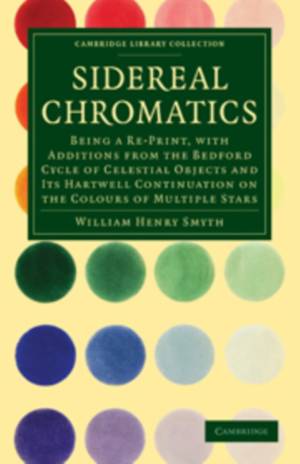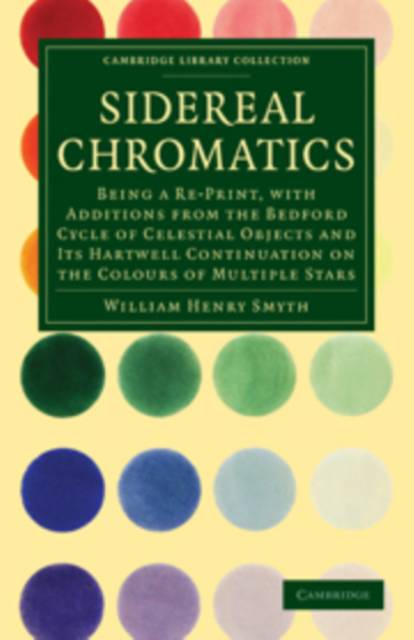
Bedankt voor het vertrouwen het afgelopen jaar! Om jou te bedanken bieden we GRATIS verzending (in België) aan op alles gedurende de hele maand januari.
- Afhalen na 1 uur in een winkel met voorraad
- In januari gratis thuislevering in België
- Ruim aanbod met 7 miljoen producten
Bedankt voor het vertrouwen het afgelopen jaar! Om jou te bedanken bieden we GRATIS verzending (in België) aan op alles gedurende de hele maand januari.
- Afhalen na 1 uur in een winkel met voorraad
- In januari gratis thuislevering in België
- Ruim aanbod met 7 miljoen producten
Zoeken
Sidereal Chromatics
Being a Re-Print, with Additions from the Bedford Cycle of Celestial Objects and Its Hartwell Continuation on the Colo
William Henry Smyth, Smyth William Henry
€ 59,95
+ 119 punten
Omschrijving
Admiral William Henry Smyth's Sidereal Chromatics (1864) represents a landmark achievement in nineteenth-century astronomy, offering the most precise observations of the colours of double stars yet recorded. An expansion upon his well-known Bedford Cycle of Celestial Objects, which garnered a gold medal from the Royal Astronomical Society, Sidereal Chromatics provides both a theory concerning the source of double-star colours and a method for determining their most exact description. Detailed charts compare Smyth's measurements of more than one hundred double stars with his own previously published observations and those of his fellow astronomer, Father Benedetto Sestini. This edition also includes Smyth's famous colour chart, an attempt to standardise the process of identifying double-star colours. Sidereal Chromatics ends with Smyth's plea to amateur astronomers to continue the effort of charting the heavens, aided by improved telescopes and works such as his, 'trustworthy treatises available to all men'.
Specificaties
Betrokkenen
- Auteur(s):
- Uitgeverij:
Inhoud
- Aantal bladzijden:
- 104
- Taal:
- Engels
- Reeks:
Eigenschappen
- Productcode (EAN):
- 9781108015172
- Verschijningsdatum:
- 1/07/2010
- Uitvoering:
- Paperback
- Formaat:
- Trade paperback (VS)
- Afmetingen:
- 140 mm x 216 mm
- Gewicht:
- 140 g

Alleen bij Standaard Boekhandel
+ 119 punten op je klantenkaart van Standaard Boekhandel
Beoordelingen
We publiceren alleen reviews die voldoen aan de voorwaarden voor reviews. Bekijk onze voorwaarden voor reviews.









